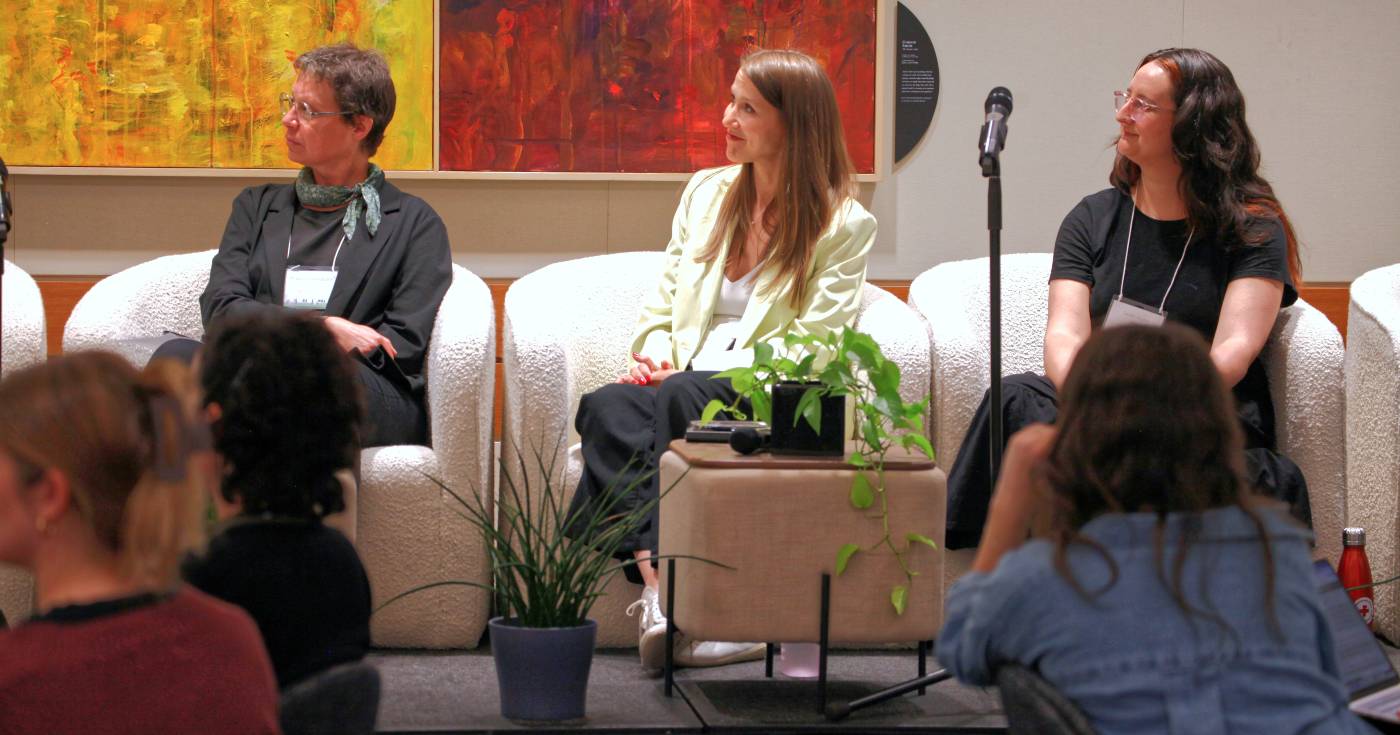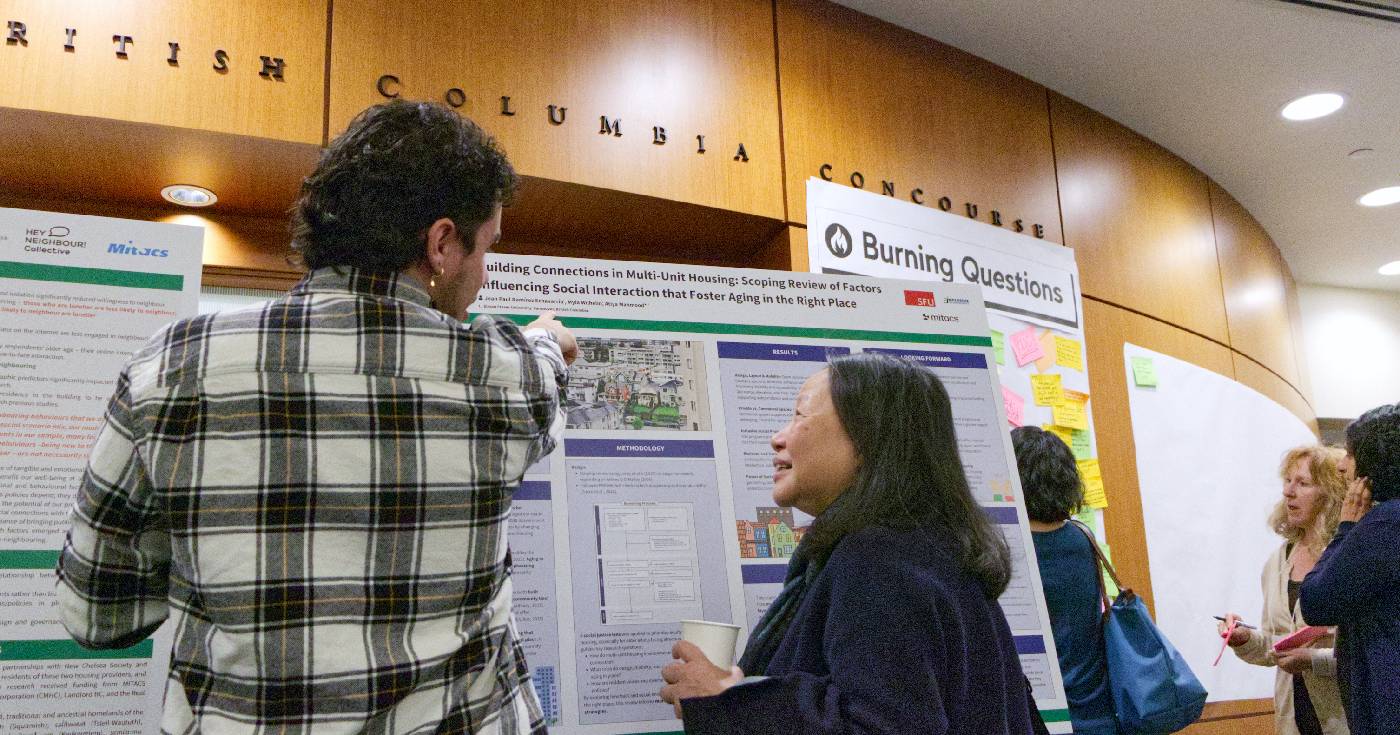Building Community is Good for Business
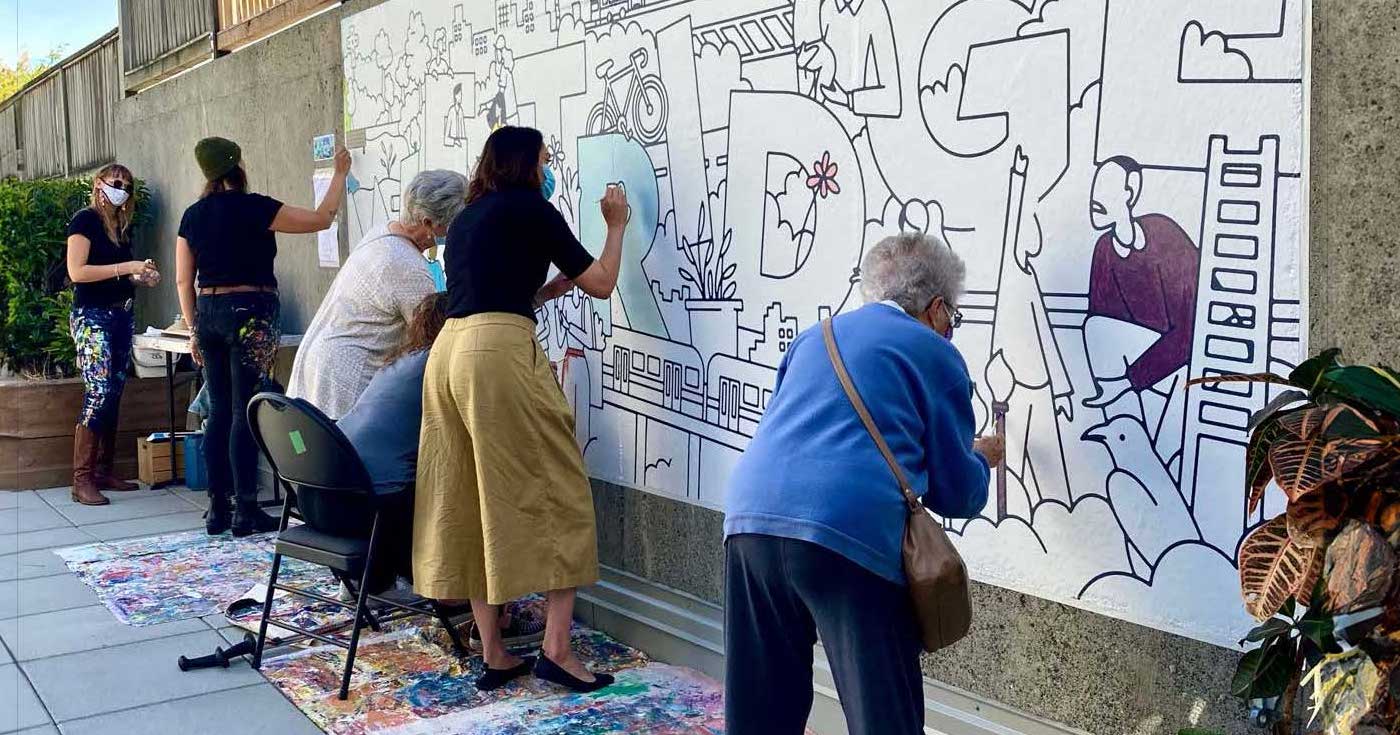
This article originally appeared in the Fall 2025 issue of Landlord BC’s quarterly print magazine, ‘The Key.’
“Landlords and property managers can do a little or a lot to support residents of their buildings to become more socially connected with their neighbours,” says Michelle Hoar. “Either way, the benefits can be significant for both sides.”
Hoar is director of Hey Neighbour Collective (HNC), a multi-stakeholder project aimed at building social connectedness and community resilience in multi-unit housing. With increased recognition of how social connectedness supports resident safety and well-being, HNC’s growing network of partners include community-based non-profits, rental housing operators and housing sector associations (like LandlordBC), researchers, municipal governments, health authorities, and others.
In August, HNC released its latest learning report summarizing the Collective’s activities, impacts, and learnings from the past five years—and the findings demonstrate that a wide range of positive pay-offs for landlords and property managers can be well worth an investment in helping their residents become more socially connected.
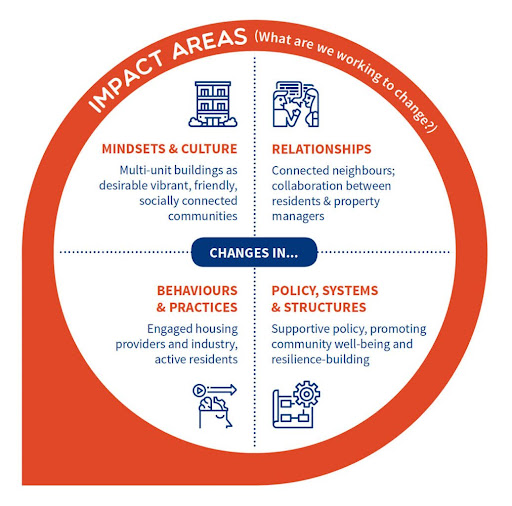
What Larger Housing Operators Have Done
HNC activities have included interviews, surveys, and focus groups with a range of large and small, British Columbia-based, market and non-market housing operators. In addition, core HNC housing partners have managed or hosted initiatives in their own buildings with the aim of improving resident wellbeing.
For example, Brightside Community Homes Foundation has integrated community development goals into its planning and operations–including regular surveys of residents done in collaboration with Simon Fraser University researchers. “The surveys have been really helpful to understand who our residents are and what their needs are, and to see the impacts of our community-building efforts over time,” says Liam Griffin, Manager of Communications and Partnerships at Brightside.
Through HNC, Brightside has worked with five non-profit organizations in 26 of its independent-living non-market rental buildings across Vancouver. Initiatives included supporting food security programs and making amenity spaces available for events, workshops, health fairs, and community gardens. Community non-profit organizations led emergency preparedness workshops and engaged with and assisted older adult residents to support better conditions for aging in place.
Concert Properties, a large market rental operator, tested a “Community Connectors” program in 11 of its buildings. Selected residents were offered free trainings and toolkits, and given monthly honoraria for taking leadership in organizing social events and activities. Concert also authorized their building managers to provide support to the resident Connectors.
Staff at BC Housing directly-managed buildings have been getting trained in Building Resilient Neighbourhoods’ Connect & Prepare program, and residents in one building recently established a floor connectors system to help keep each other safe during emergencies.
Opportunities for Smaller Housing Operators
Many landlords don’t have the resources of larger organizations, but that doesn’t have to be a barrier. “Initiatives to boost social connection can often look like ‘nice-to-haves’ for which some housing operators feel they don’t have the capacity or time,” says Hoar. “But we’ve found that even small efforts can have big impacts.”
HNC’s practice guide for housing operators describes different approaches for fostering resident social connectedness in multi-unit housing, from easy and light-touch to those requiring more investment, such as:
- Install a bulletin board for resident use
- Invite residents to an online communications platform
- Give easy access to an amenity room
- Optimize communal spaces such as lobbies and corridors by using low-cost design elements that encourage social interaction
- Offer a storage area for shared emergency supplies
- Hold an on-site BBQ or other social event
- Allow community organizations to host activities onsite
- Give training, support, or honoraria to resident leaders willing to organize community-building events and initiatives.
Other opportunities include improving indoor and outdoor amenity areas during building retrofits to encourage socializing, and following best practices in age-friendly, sociable design for new buildings.
According to some housing operators, the positive impacts of these kinds of efforts can be immense.
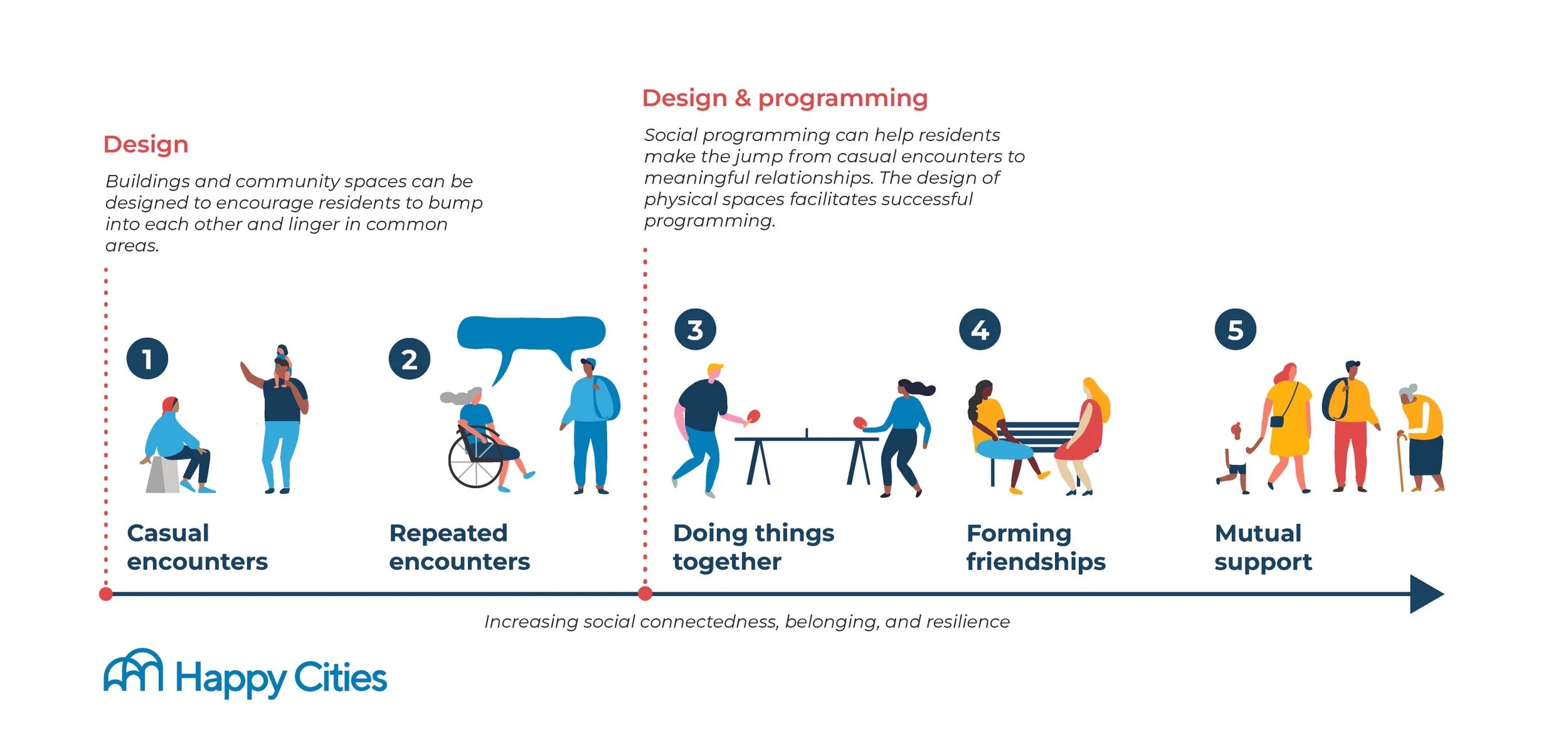
The beneficial impacts of being an ‘enabling host’
HNC’s learning report highlights that housing operators can be vital enablers for supporting social connectedness between residents. However, Hoar says that the relationships of power between tenants and landlords or property managers can affect trust and collaboration. “It’s often easier and more cost-effective for housing operators to partner with third-party, community-based organizations that can more comfortably engage residents,” says Hoar. This approach can also help connect more vulnerable residents to community services that support their wellbeing.
Some market landlords have reported that supporting resident community-building has strengthened their brand profile—and indeed, HNC found that 50-90% of participating residents and partners surveyed reported improved relationships between residents and building staff or managers.
Housing operators were also glad to see some groups of residents become better prepared for emergencies—and they believed that made the building safer for everyone. “Connect & Prepare was very positive for me,” said one building manager. “And it’s all to the building owner’s advantage as well, if the tenants who live in this building are thinking about safety, prevention, and preparedness.”
Sometimes, the impacts of having successfully fostered social connectedness were “softer” or less visible, but still meaningful: a neighbour taking a day off work to help another who was ill; neighbours rushing out during the night to help someone whose apartment had flooded; a resident with a lonely, barking puppy who received offers of dog-sitting from other dog-owners.
“Tenant issues were being resolved by tenants because the on-line platform facilitates communication, problem-solving and mutual aid around things that previously would have gone to the manager as a concern,” said one housing operator.
Some on-site staff reported feeling a morale boost themselves, and said they believed social connectedness programs appeared to be contributing towards more stable tenancies.

Looking ahead: Engaging more market landlords and property managers
Now that “social programming” is proving to have wide-ranging benefits, Hoar says that HNC is working to inspire “culture change” across the housing industry as a whole. “How can we help make socially connected multi-unit housing communities the new normal?” she asks.
At HNC’s recent symposium (Living Together: Connecting housing, social health and resilience) – co-sponsored by LandlordBC – a number of ‘calls to action’ emerged, including engaging more market landlords and property managers and continuing to build a strong evidence-base around business benefits for housing operators.
Many symposium participants also highlighted the immense value of social connectedness as a “multi-solver” during the mounting “polycrisis” that Canada is currently facing. “Stronger social connections between neighbours can support emergency preparedness efforts, climate adaptation plans, and create stronger conditions for aging in place–all at the same time!” says Hoar.
Become Part of the Change
HNC continues to facilitate opportunities for industry peer-learning, as well as to create and make available practice guides, design toolkits, resident survey templates, event planning kits, and more.
Hoar says that whether a company or organization is already a social-connectedness champion, just getting started, or merely curious, HNC welcomes opportunities to explore possible collaborations. Reach Hey Neighbour Collective through their website. Read HNC’s five-year learning report here.
Rob Wipond is a contributing editor for Hey Neighbour Collective.
Take a look at Hey Neighbour Collective’s 5-year Learning Report here.



